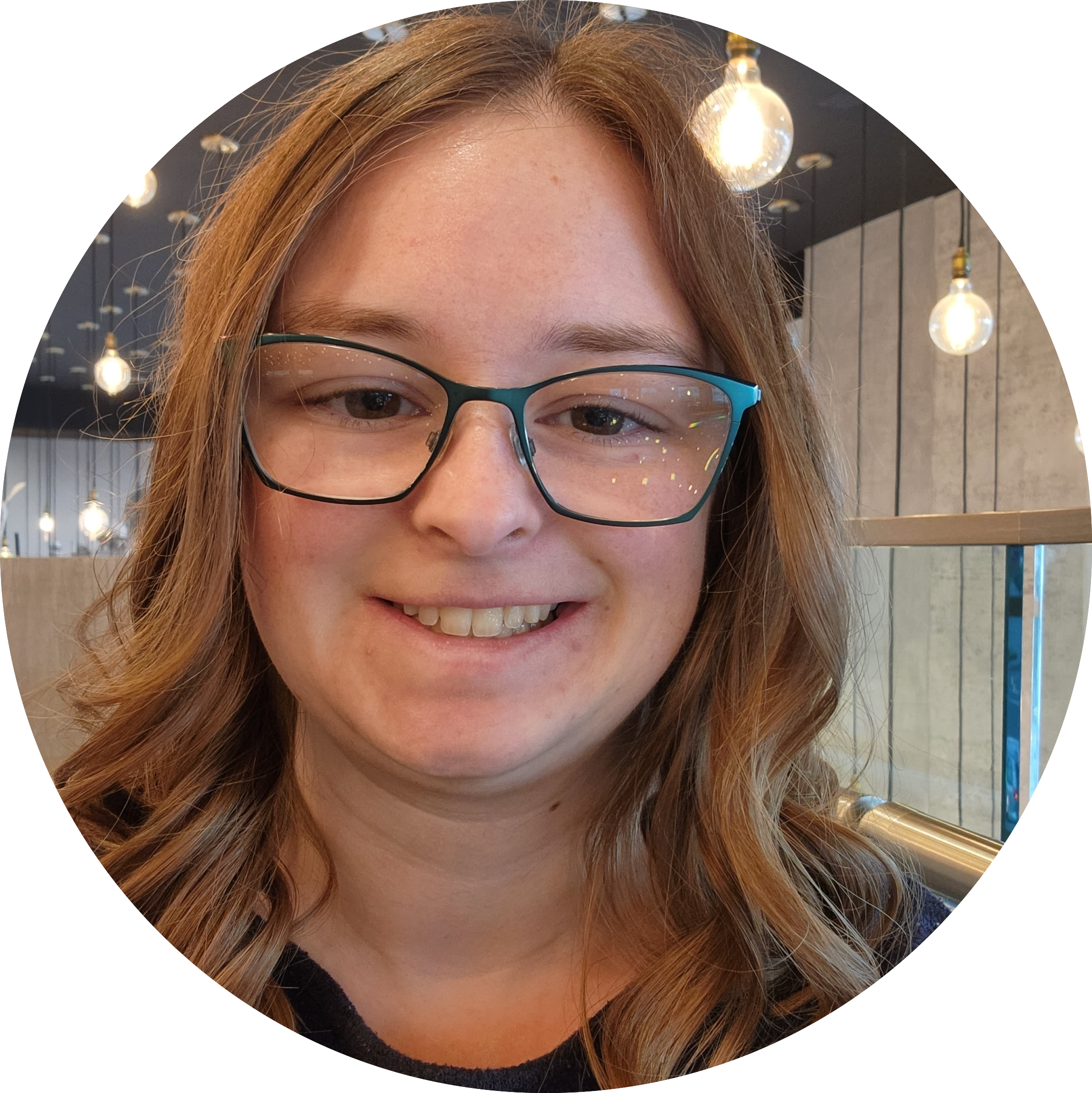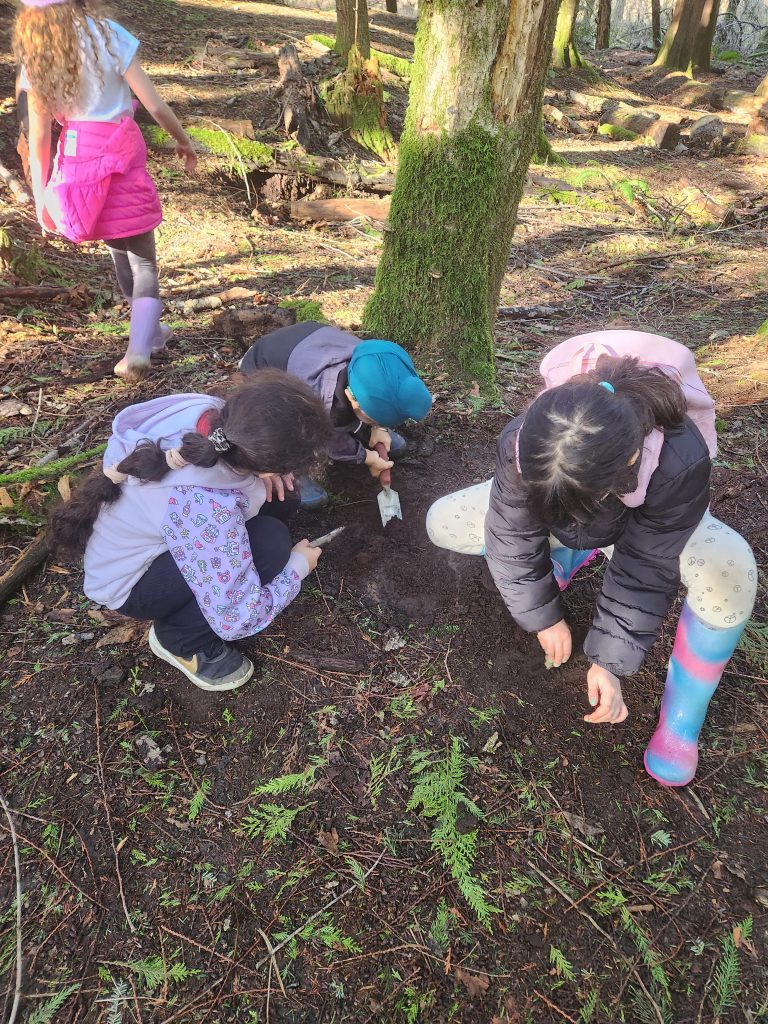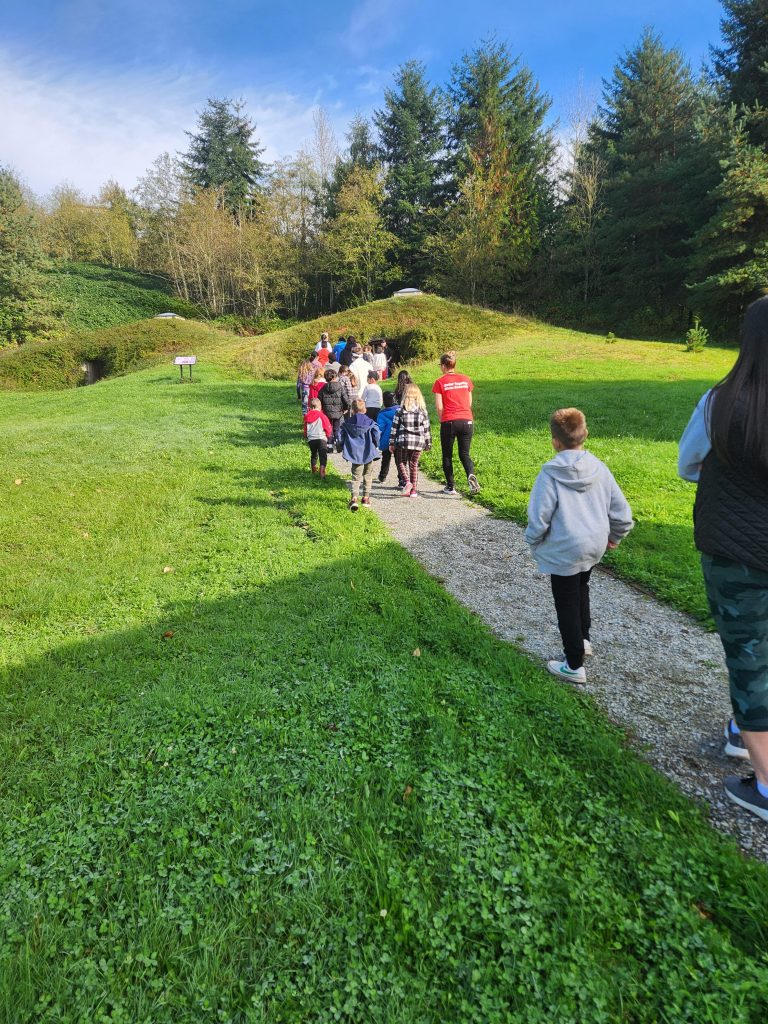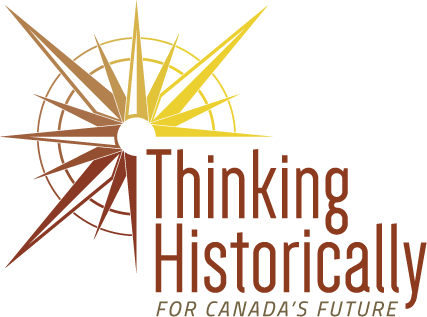Caitlin Humber
Elementary School Teacher
Caitlin Humber had been teaching elementary school for seven years when she spoke to us, and currently teaches a grade 2/3 combined class at Ecole Clearbrook Elementary in Abbotsford, British Columbia. Her school has 19 classes, five of which are French Immersion, and she teaches the following subjects to her students: French Language Arts, Mathematics, Health, English Language Arts, Science, Social Studies, Careers, and Arts. Caitlin described her community as diverse because it includes Asian-Canadian, Indo-Canadian, Indigenous, and French-speaking people. According to Caitlin, “within the context of the school, there’s a lot of different religious and cultural celebrations,” which contributes to the community’s diversity. Many students speak other languages at home. There is also a range of income levels, including many families that struggle financially. Caitlin noted that “the community’s diversity makes it unique.”

Ecole Clearbrook Elementary
Abbotsford, British Columbia

forest to visualize what it was like on the land when the lake was there. Image provided by Caitlin Humber.
Historical Thinking
Caitlin has a strong background in historical thinking and is familiar with books like Peter Seixas and Tom Morton’s The Big Six: Historical Thinking Concepts.
While at university in Ontario, Caitlin studied history and has been able to apply what she learned to the British Columbia social studies curriculum she teaches. She has also completed a master’s degree in Indigenous Education History, which has influenced how she approaches history teaching with her students.
Caitlin is supportive of the focus on historical thinking in the BC Social Studies curriculum, and thinks, “the biggest strength of the curriculum is that it is really set up to evaluate and teach the historical thinking concepts, rather than a giant list of content. And I think that’s helpful because teaching the skills is really what you want the kids to come away with.”
She also places importance on challenging traditional narratives about Canadian history by focusing on Indigenous perspectives and histories. “I do try to look at more than just the typical kind of traditional story of Canada or the place that we’re in and work to honour the Indigenous groups of this area and bring in their perspectives and highlight the perspectives of some other people.” Overall, Caitlin’s educational training in history has helped her design lessons and learning activities that challenge Eurocentric grand narratives in Canadian history and consider different perspectives and viewpoints reflected in the community.

Civic Engagement
Caitlin focuses on teaching local history to help her students better understand the history of the community they live in and become more engaged citizens.
Caitlin’s students studied the history of Semá:th Xo:tsa (Sumas Lake), which was drained and converted into farmland in the early 1900s.
Using this as an example, Caitlin taught her students how different waves of immigration to the area affected the local landscape. “I talk about Sumas Lake that’s now the Sumas prairie, and why this has become agricultural land and how it was used by Indigenous groups before that.” In this way, she demonstrates how history connects to students’ present-day lives.
Caitlin developed a unique activity where the class created maps of the Sumas Lake area. She explained, “I worked with the students on creating maps of the area that is now agricultural land that used to be a lake, and Indigenous communities resided kind of up the hill and used that [the lake] as a resource for food. And there were fish and all this life in there, and it got drained by European immigrants to make farmland.” This activity helped her students think about future relationships between Indigenous and non-Indigenous community members. “I think it got them thinking about how they can shape the future,” Caitlin said.

Indigenous Knowledges
Caitlin is committed to teaching her students about Indigenous history and knowledges. “I want them to understand that land is important, an important relationship for Indigenous history. So, I try to learn what I can and pass that on. I don’t really see it as coming from me, but kind of through me,” she said.
Teaching Indigenous knowledges to her students is motivated by Caitlin’s desire to bring about real change in Canada and her community. As Caitlin put it, “I do really try to look at more than just the typical kind of the traditional story of Canada or the place that we’re in and really work to honour the Indigenous groups of this area and bring in their perspectives because that’s important to me, that it’s not just my perspective, or what I think.”
Caitlin’s recently completed master’s degree helped her learn more about Indigenous traditions and knowledges. She also committed herself to making connections with local Indigenous communities so that she can better teach her students about their histories.
By connecting with local Indigenous communities, Caitlin has been able to identify learning resources that go beyond the class textbook. However, locating appropriate resources for teaching about local First Nations communities is one of her biggest challenges because the lack of resources “makes it difficult to talk about, for example, the Sumas First Nation, which is directly affected by this particular lake and the history there.”
Co-created by Caitlin Humber and Paul McGuire
